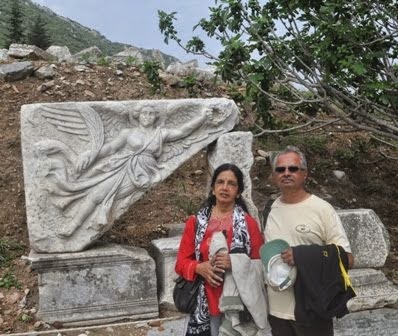ROCK CLIMBING
It is not quite easy to define rock climbing, but it is not difficult too. Anyone who claims to be a rock climber has his own version of the game. Rock climbing for some is to challenge their spirits and explore new heights, to give a fillip to their unbounded imaginations; for others, it is a way telling the world that he/she has finally arrived. For many of the professional rock climbers, it is not a sport. Can you call a mission to moon a sport or pastime? If not, then why should rock climbing be called a sports is the argument. For them, rock climbing is an adventure of the greatest magnitude; it is a fight against self, against the elements, and the ultimate goal is to reach the summit and return back alive.
Rock climbing is a test of strength, concentration and coordination as well as skill and technique. A climber learns from experience that the mountain must not be taken for granted.
It can be rough and antagonistic to those who venture to come to grips with it. Nevertheless, as a sport, climbing continues to offer a thrill and challenge that is compulsive.
In India, rock climbing, as most other adventure sports, is a relatively new sport. However, in a short span of time, it has become the most popular adventure sport. Because of the good distribution of great climbing rocks throughout India, coupled with the element of excitement involved, rock climbing has become the sport to participate in for the young and the old alike.
Courtesy Temple Pilots)
Today I went for a rock climbing and rappelling expedition. We were a group of 8 people led by the organisors, who were 5.
We left Dadar, Mumbai, about 7 am and reached Mumbra about 8am. From there it took us another hour to reach the foot of the rock. Mumbra, just after Thane has a temple well known to everyone in Maharashtra. The temple is situated atop a hill around
100 M high with a steep set of steps.
About half way through, one has to walk into a jungle on the right side which leads to a number of rock formations. This is where rock climbing is done. The rock we tried was about 25 M high.
The instructor explained how climbing and rappelling has to be done.After the harness and helmet are put on,the rope hanging from top of the rock is clamped to the harness near the waist. The person on top of the hill who controls the slack of the rope has to be warned that climbing is going to start.Out of the four limbs,three should always be holding on to the rock. One has to find a proper foot hold or grip for the hands. Then weight of the body should be shifted to that limb and with the help of the other three limbs the body has to be pulled upwards.While doing this further holds should be checked.After a little climbing the rope will slacken and the controller has to be told to tighten it. This is done to prevent deep fall in case one slips.The climb was rather difficult as not many holds were available for your limbs. Some how, some of us managed the climb.
RAPPELLING
Rappelling is a form of controlled descent from the top of the hill, using a rope anchored at the top. It relies on the friction between the rope and your body, or through a mechanical device (billet).Generally the rope is passed through a friction device in your harness. One hand is used to guide your descent while the other hand regulates the pace of your descent. Your body should be in an ‘L’ shape, with legs straight, feet apart planted firmly on the rock surface. Your body weight takes you down while the friction device controls the pace of the descent. You have to slowly walk backwards down the rock face, while releasing the rope with the rear grip.
After the difficult climb,rappelling was not very difficult, everyone did it with ease.
It was extremely hot and humid and every one was tired by 11am, by which time all participants had tried and some completed the climb.
